Bird Watching
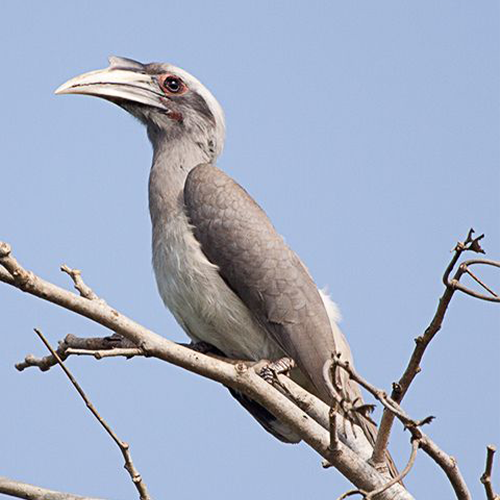
Indian Grey Hornbill
Identified by its large, curved beak and distinctive call, the Indian Grey Hornbill is a fascinating bird to spot. It nests in tree cavities and feeds on fruits, insects, and small vertebrates.

Crested Serpent Eagle
This majestic raptor is recognized by its distinctive crest and keen eyesight. It can often be seen perched on tree branches, scanning the surroundings for prey.
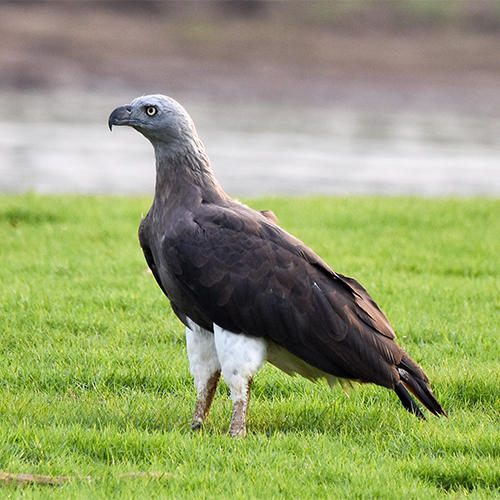
Grey Headed Fish Eagle
Found near water bodies, the Grey-headed Fish Eagle is a large raptor known for its unique call. It feeds primarily on fish and has a striking appearance with a white head and grey-brown feathers
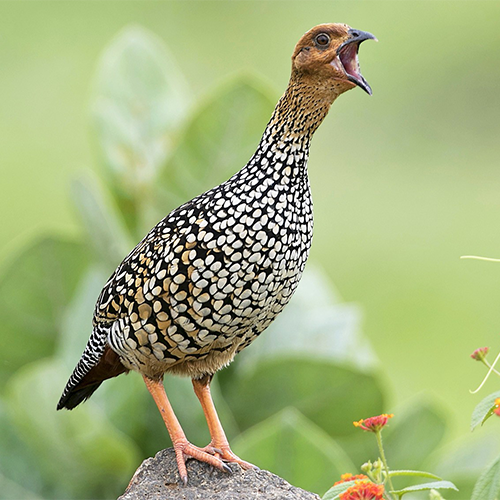
Painted Francolin
This ground-dwelling bird is easily recognized by its vibrant plumage. The male has intricate patterns and colourful markings, while the female has a more subdued appearance.
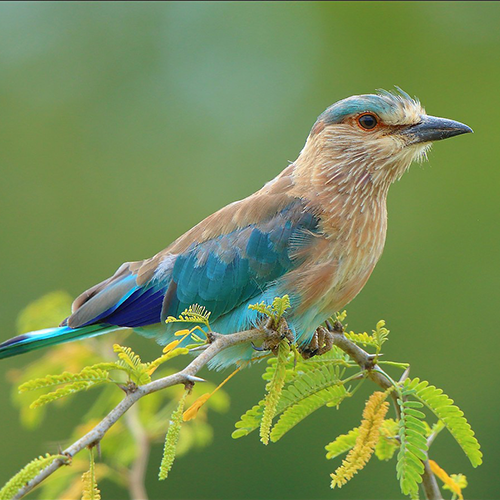
Indian Roller
The Indian Roller is a common sight in Tadoba, with its striking combination of bright blue wings and a rusty-brown body. It is often observed perched on treetops or in open areas, displaying its acrobatic flight during courtship.
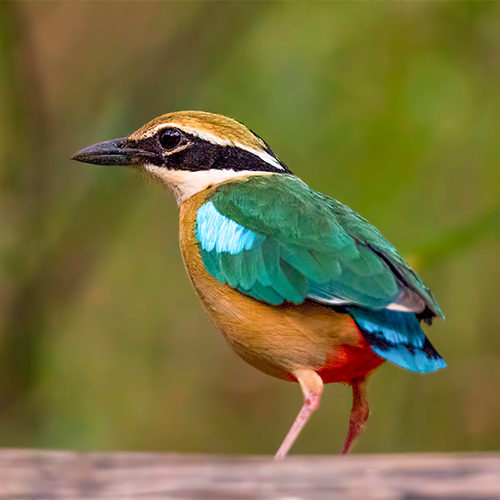
Indian Pitta
Known for its vibrant plumage, the Indian Pitta is a colourful bird with a combination of green, blue, and yellow feathers. It is often spotted near the forest floor, hopping and foraging for insects.
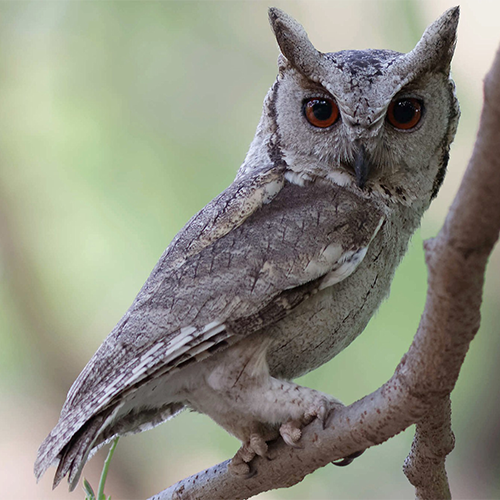
Indian Scops Owl
The Indian Scops Owl is a small nocturnal bird with a characteristic call. It is a master of camouflage, blending seamlessly with its surroundings during the day.
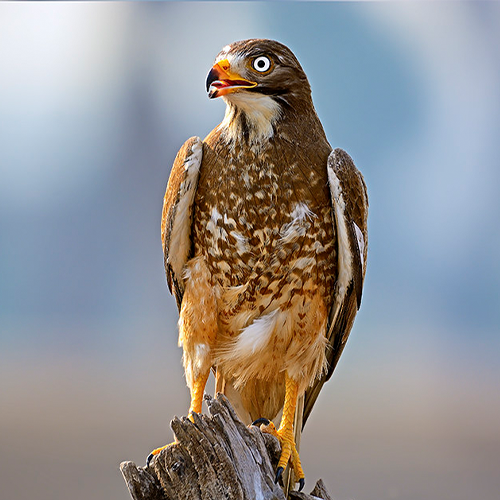
White Eyed Buzzard
With its piercing white eyes and broad wings, the White-eyed Buzzard is a striking bird of prey. It can be seen soaring above the forests, searching for small mammals and reptiles
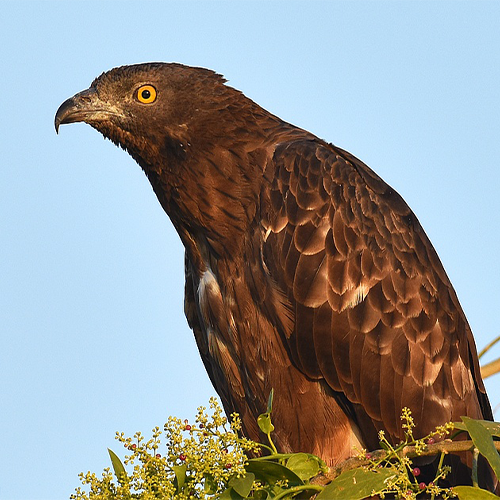
Oriental Honey Buzzard
This migratory bird is known for its distinctively shaped wings and its diet primarily consisting of bees and their larvae. It is an agile flyer and can be spotted during its seasonal visits to Tadoba.
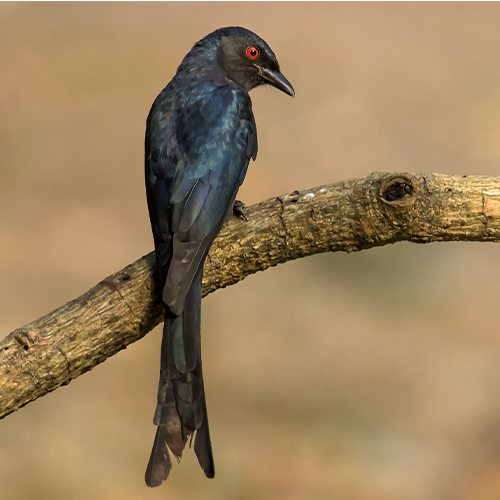
Drongo
The drongo is a highly intelligent and adaptable bird belonging to the family Dicruridae. They have a glossy black plumage and forked tail, which distinguishes them from other birds.
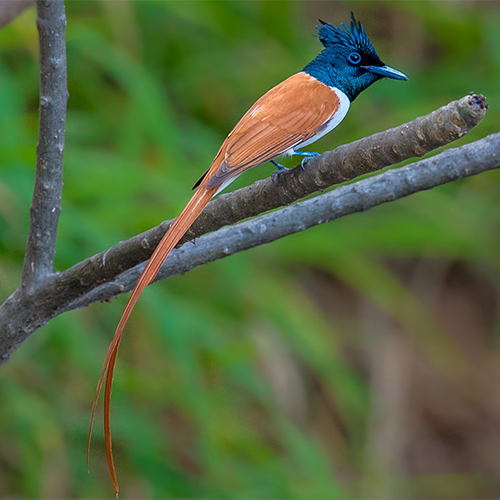
Flycatcher
Small to medium-sized birds known for their adept aerial hunting skills, where they catch insects mid-flight as a primary food source. Known for their sallying behavior – perching on branches and swiftly launching themselves to catch insects before returning to the same perch.
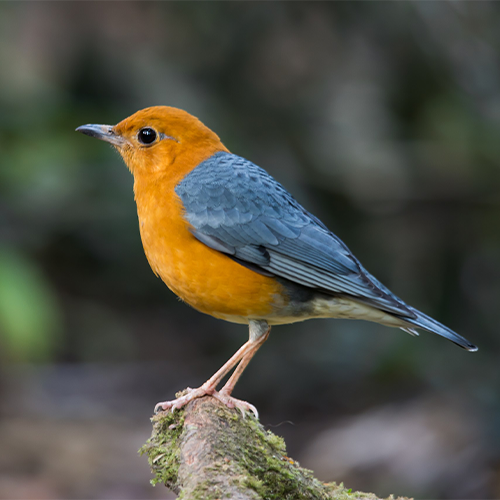
Orange Headed Thrush
Renowned for its vibrant plumage and melodic song, this thrush species adds color and music to the ecosystems it inhabits. With its distinct orange head and upper breast, the Orange-headed Thrush stands out amidst the greenery of its woodland and forest habitats.
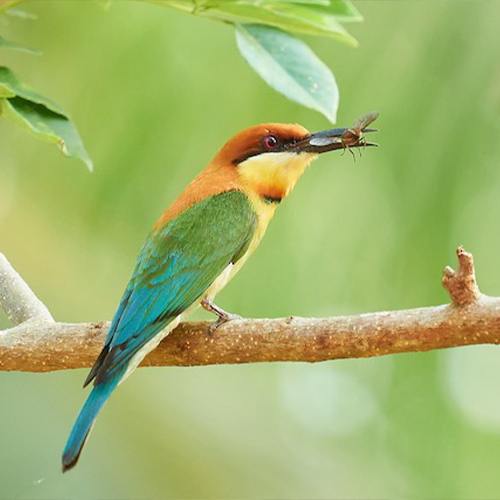
Bee Eaters Chestnut
With its vibrant plumage and distinctive hunting behavior, it brings both visual beauty and ecological significance to its habitat. Known for its eye-catching combination of colors, including a chestnut-colored head, a bright green body, and a blue throat.

Coppersmith Barbet
The Copper-smith Barbet derives its name from the repetitive "copper-smith, copper-smith" sound it creates, resembling the tapping of a metalworker. These barbets play an important ecological role as both seed dispersers and insect controllers. Their presence contributes to the maintenance of healthy forest and woodland ecosystems.
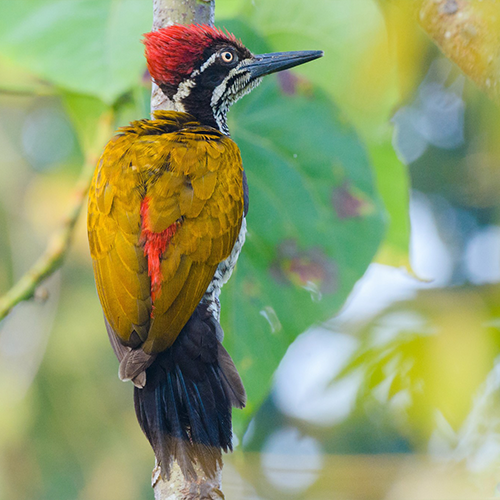
Greater Flameback
Easily recognizable by its bold black and gold coloration, the Greater Flameback features a golden-yellow back and wings, along with a black face and throat. This woodpecker is known for its characteristic drumming sounds, created by hammering on tree trunks with its strong bill. These drumming sounds serve both as territorial signals and communication with other individuals.
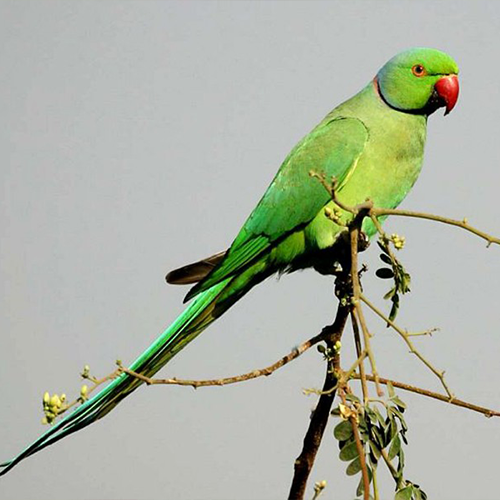
Rose Ringed Parakeet
Recognized by its bright green feathers, the Rose-ringed Parakeet exhibits sexual dimorphism, with males having a distinct rose-colored ring around their necks. This ring is absent in females and juveniles. This parakeet's vivid appearance adds a burst of color to the landscapes it inhabits.
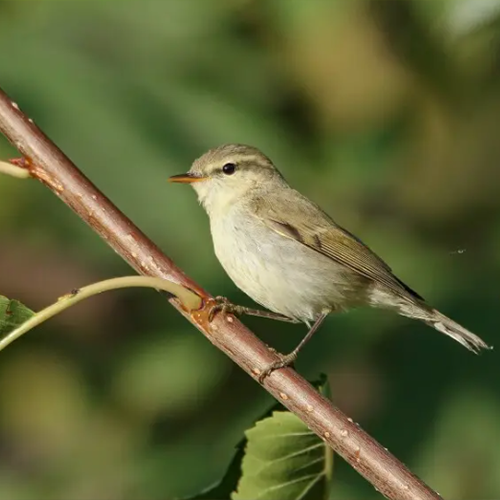
Greenish Warbler
Distinguished by its olive-green plumage and pale underparts, the Greenish Warbler often blends into the foliage of its woodland habitats. While its appearance might be unassuming, its melodious song adds charm to its presence. The song is characterized by its sweet, high-pitched notes, which can be heard during the breeding season as the bird establishes its territory.
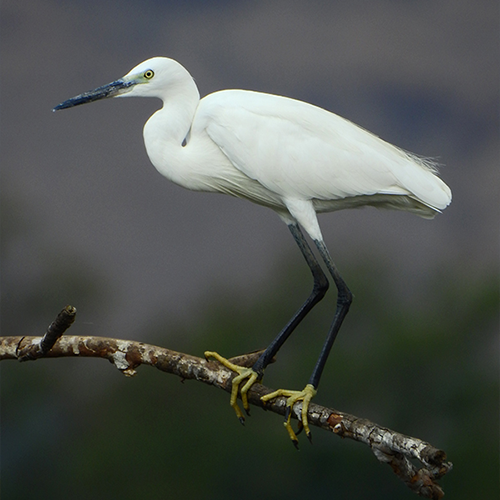
Little Egret
Characterized by its pristine white feathers, the Little Egret stands out against its aquatic and wetland environments. It has a long neck and legs, which aid in its hunting strategy. The bird's bright yellow feet and facial skin add a touch of color to its appearance. A skilled hunter, the Little Egret wades in shallow water, using its sharp beak to catch a variety of aquatic prey, including fish, frogs, insects, and crustaceans.
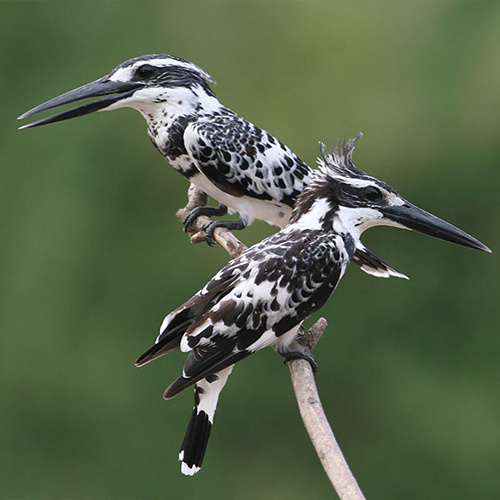
Pied Kingfisher
The Pied Kingfisher is primarily associated with water bodies such as lakes, rivers, and coastal areas. It is often observed perched on branches or wires near the water's edge, where it hunts for fish and other aquatic prey. Its hunting technique involves hovering in mid-air above the water and then rapidly diving with precision to catch its prey.
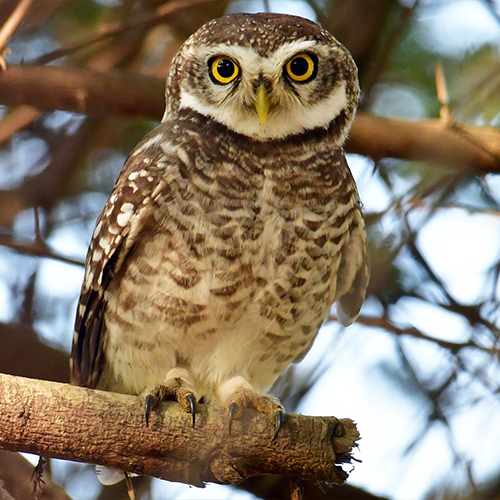
Spotted Owlet
Active during the night, the Spotted Owlet emerges at dusk to hunt for its primary diet of insects, small rodents, and other small creatures. It is known for its agile and acrobatic hunting behavior, which includes swooping down to catch prey with precision. In addition to its hunting skills, the Spotted Owlet is famous for its vocalizations. It produces a series of distinct calls, including whistles, hoots, and screeches.
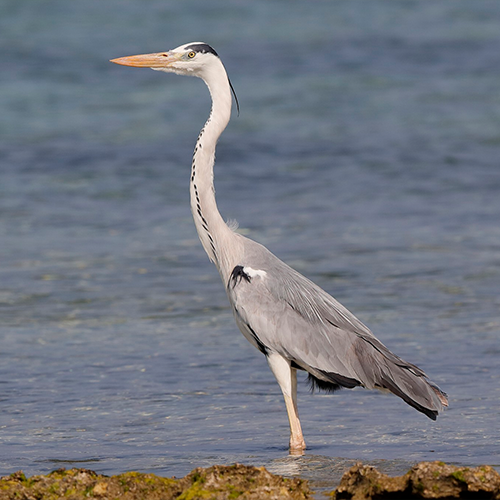
Grey Heron
The Grey Heron is renowned for its patient and strategic hunting behavior. It wades slowly through shallow waters, waiting silently for its prey to come within striking distance. Its sharp beak and quick reflexes allow it to catch a diverse range of aquatic prey, including fish, frogs, insects, and even small mammals.
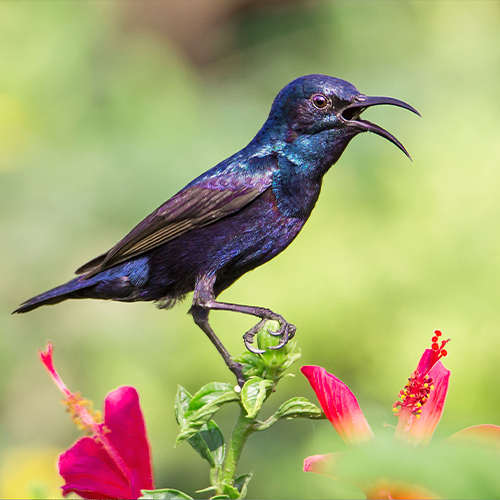
Purple Sunbird
As nectar-feeders, Purple Sunbirds play an essential role in pollination. They have adapted to extract nectar from flowers using their specialized tongues, benefiting both the birds and the plants they visit. Their presence adds beauty to these environments, as well as a reminder of the interconnectedness between avian species and the plants they rely on.
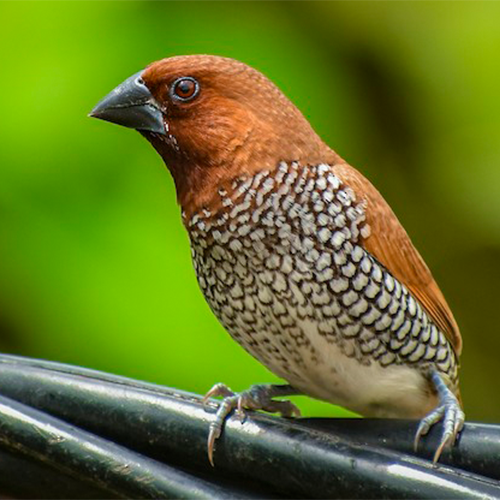
Scaly Breasted Munia
Distinguished by the intricate pattern of white and brown scales on its breast, the Scaly-breasted Munia displays a unique and appealing plumage. The Scaly-breasted Munia is often found in flocks, displaying a strong social nature. These flocks can be seen foraging for seeds on the ground or perched on grass stems. Their cohesive behavior underscores the importance of social bonds in this species.

